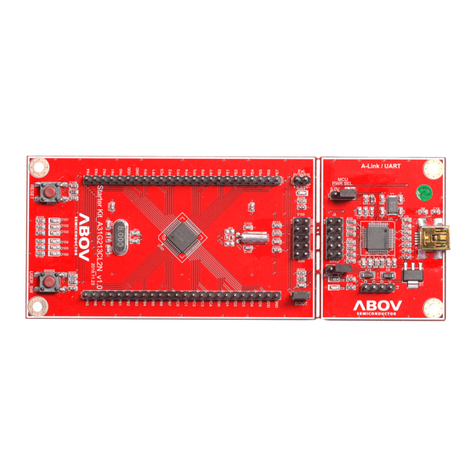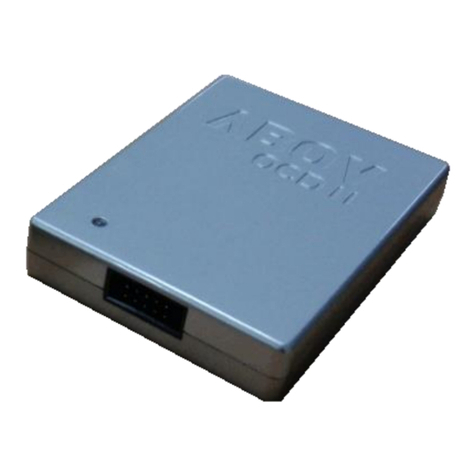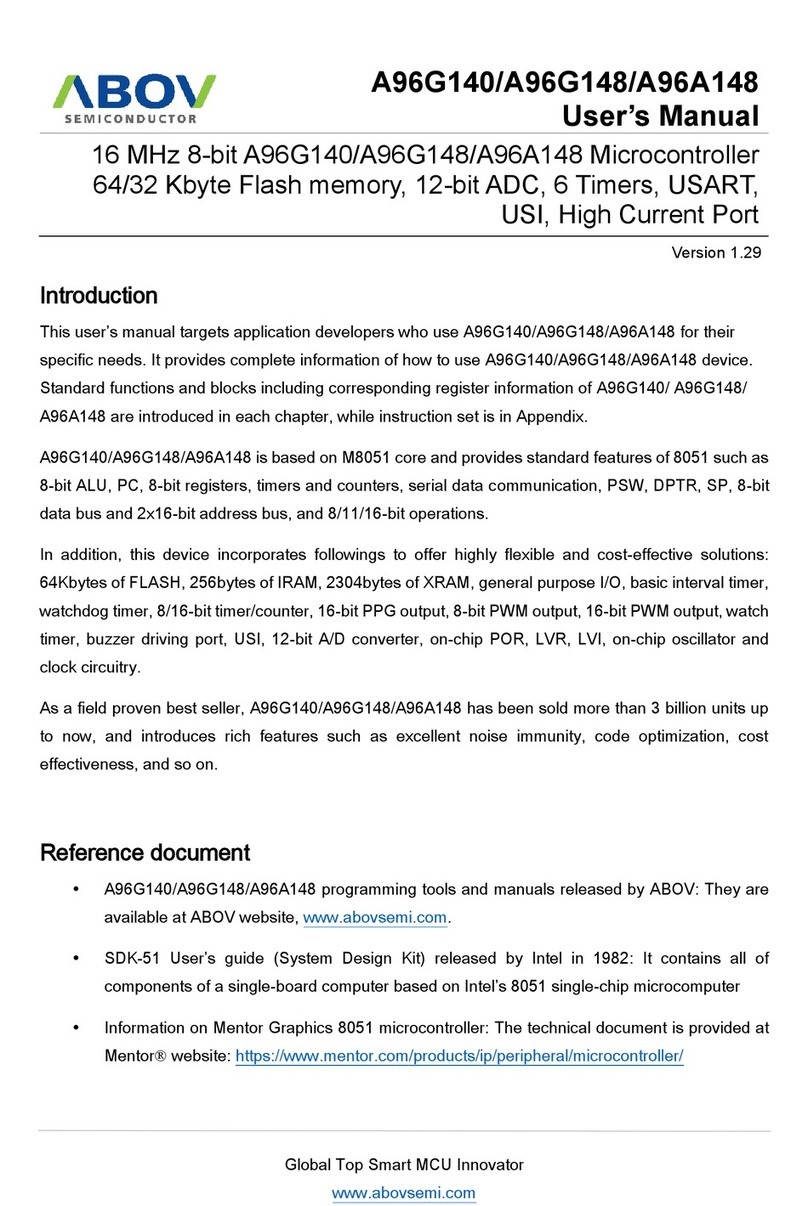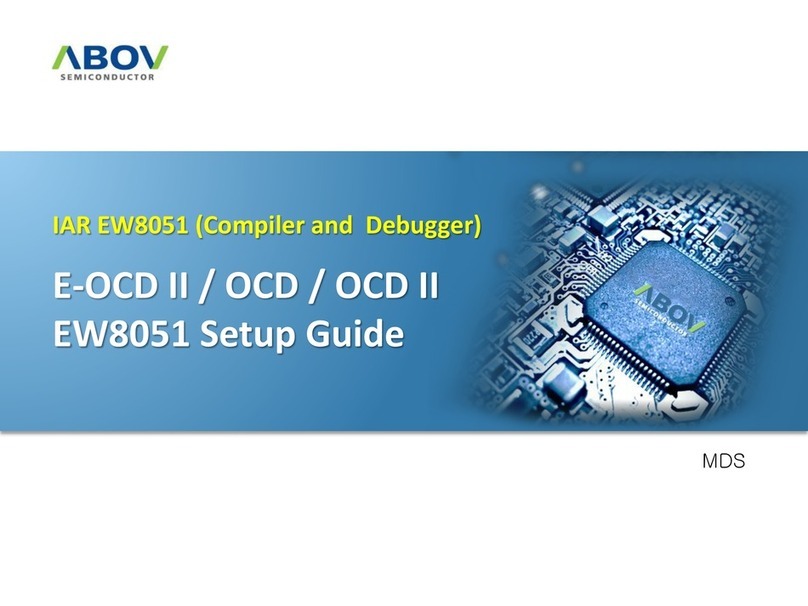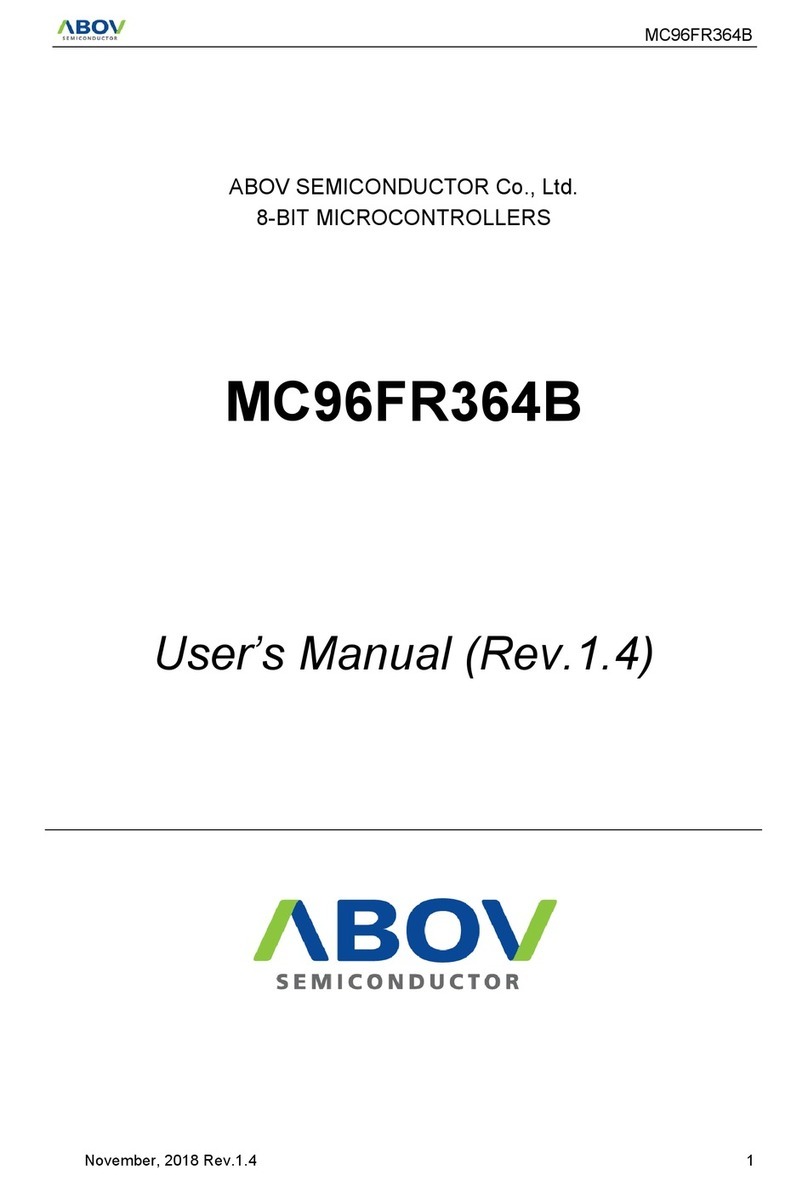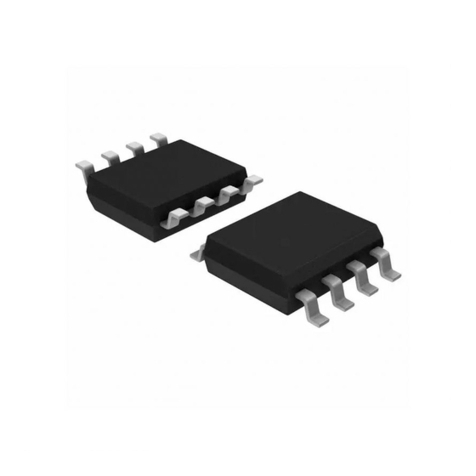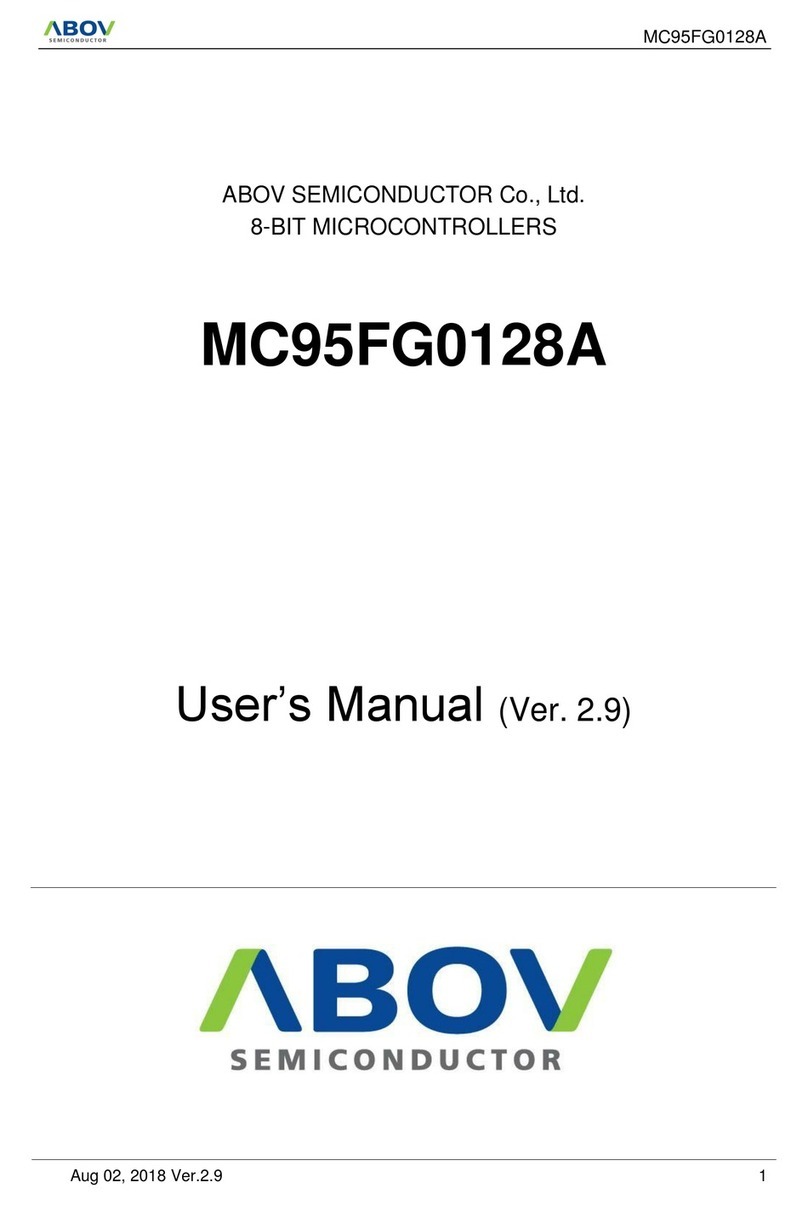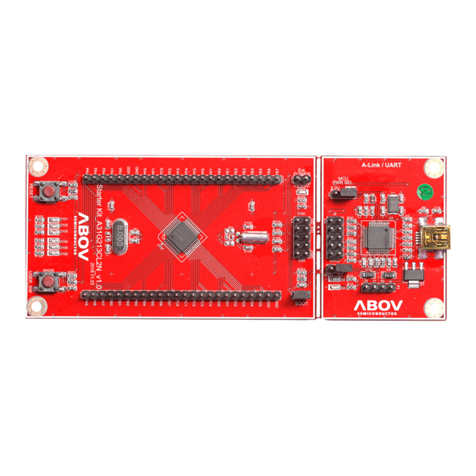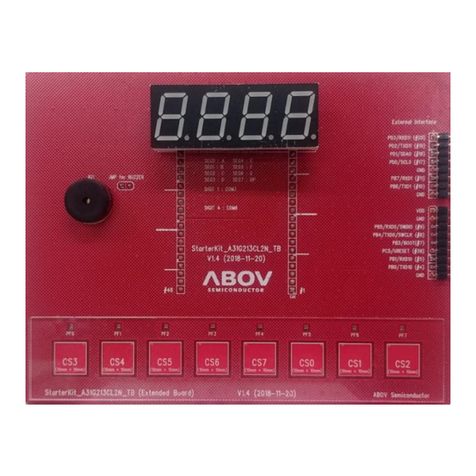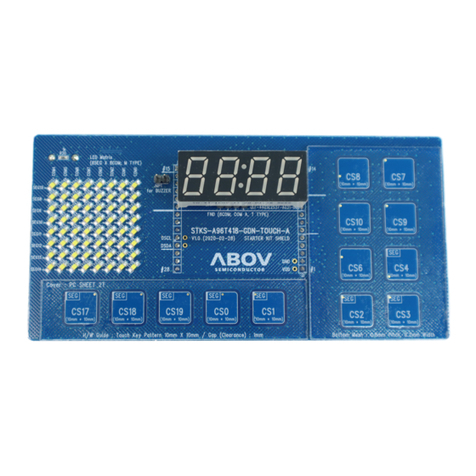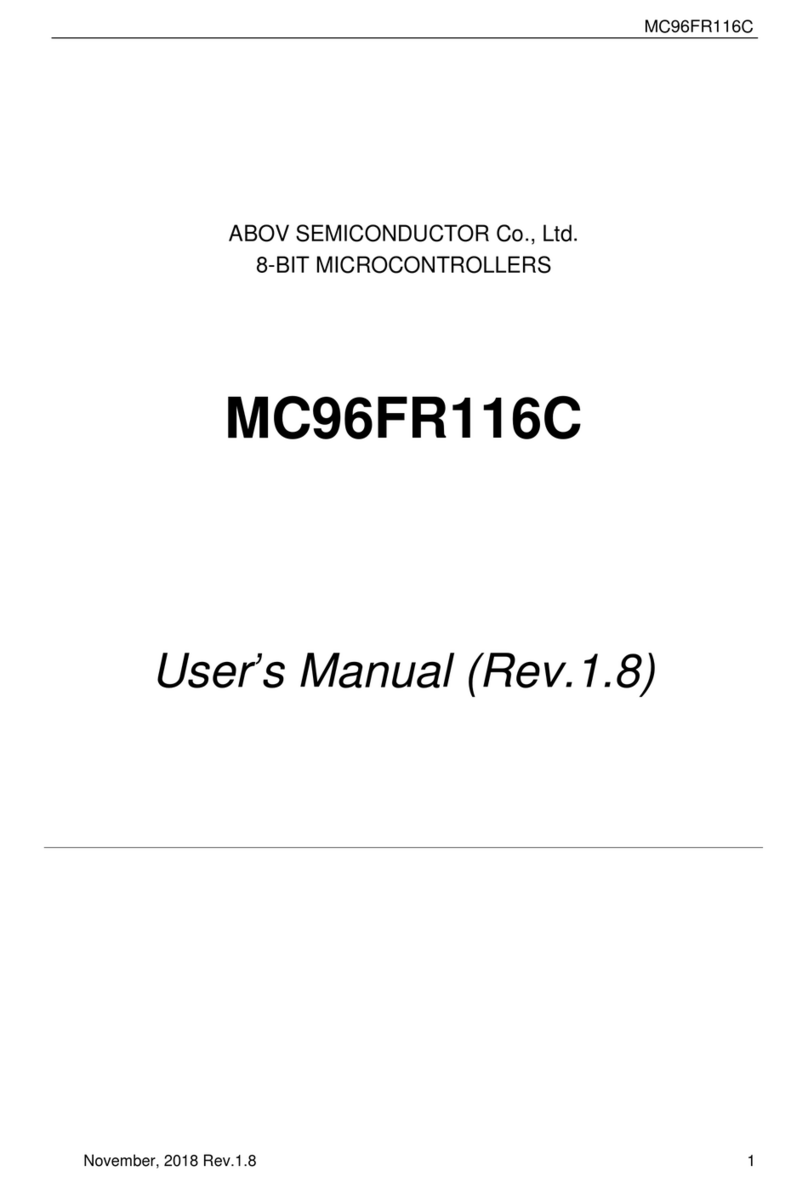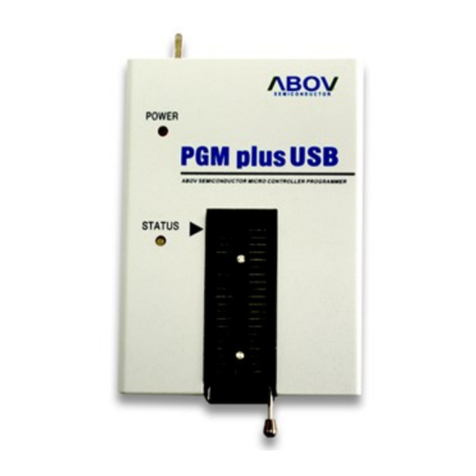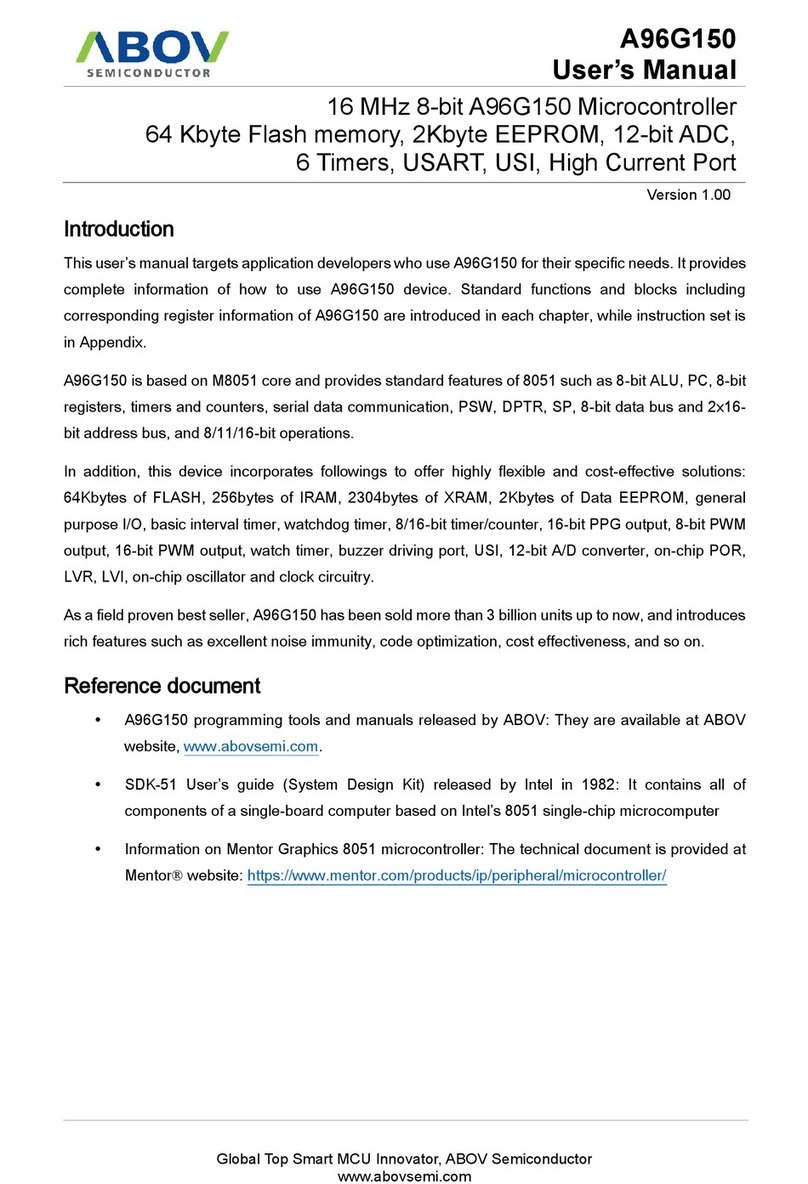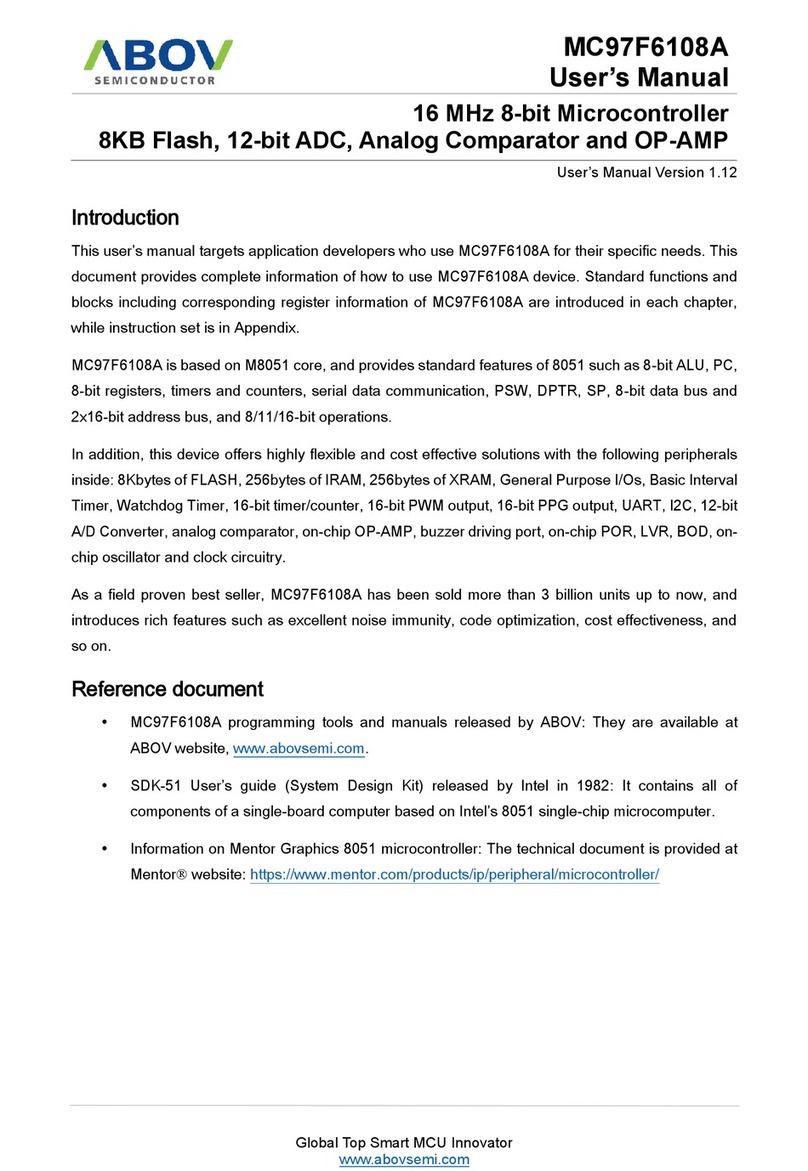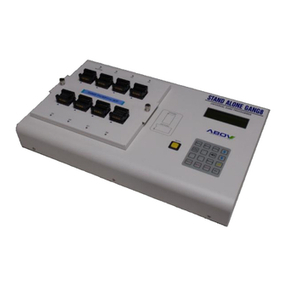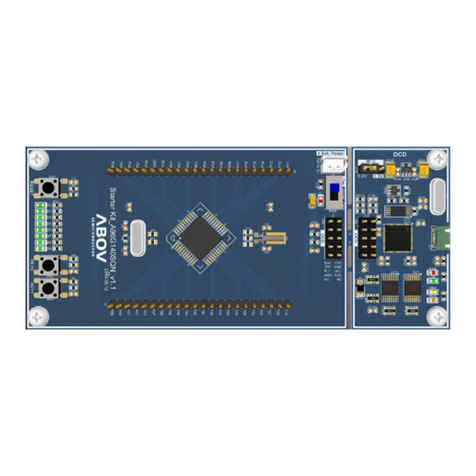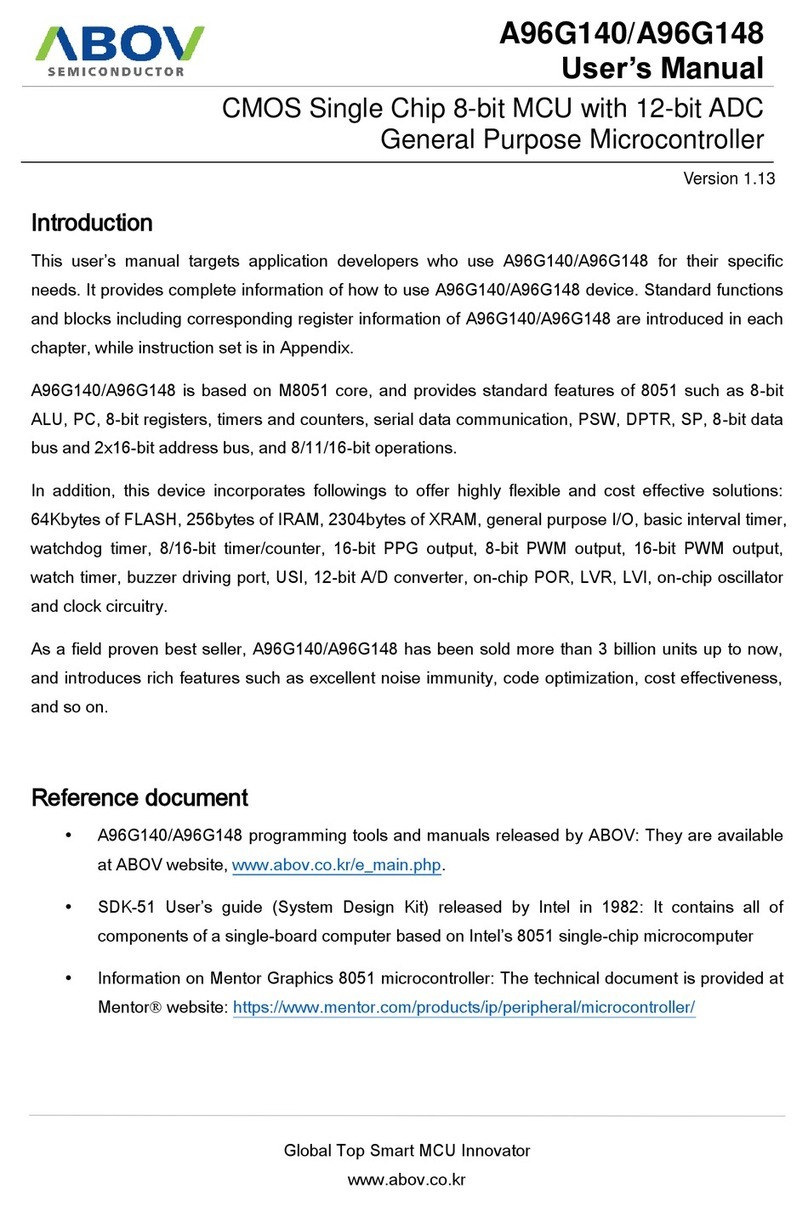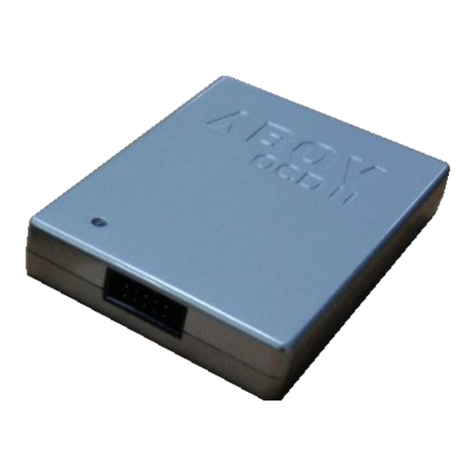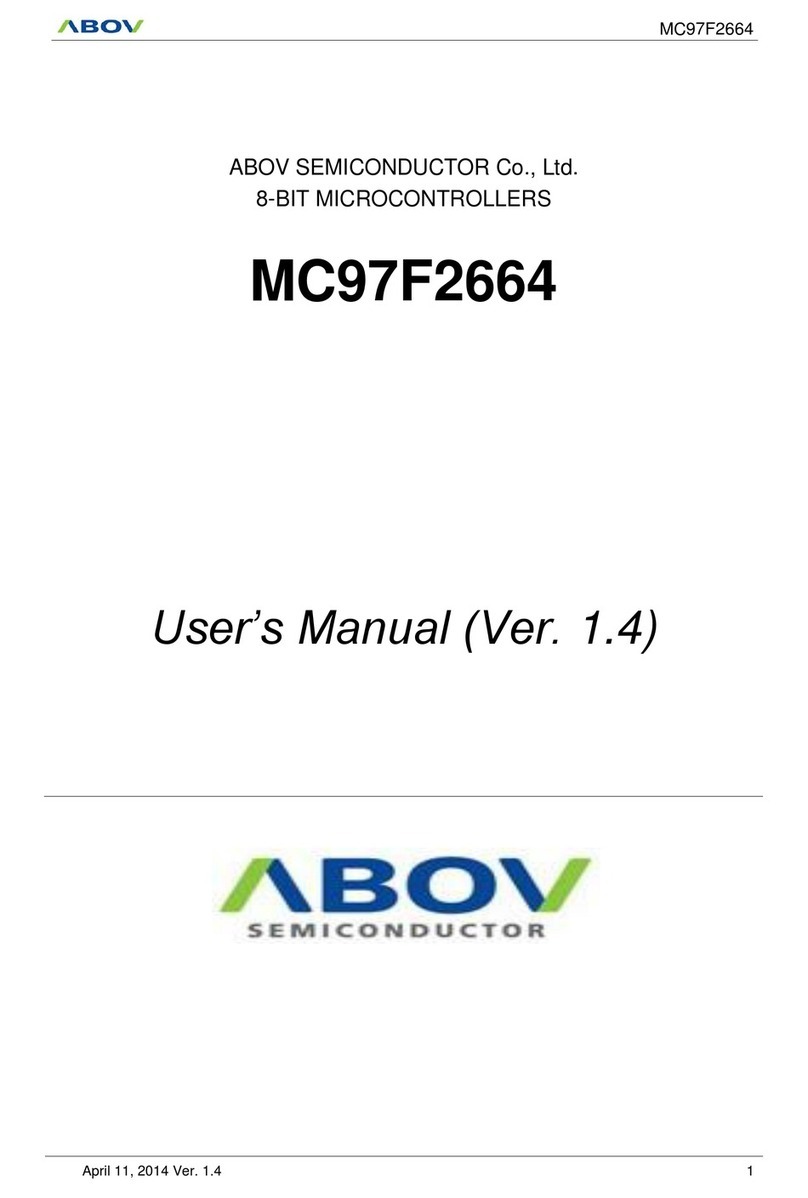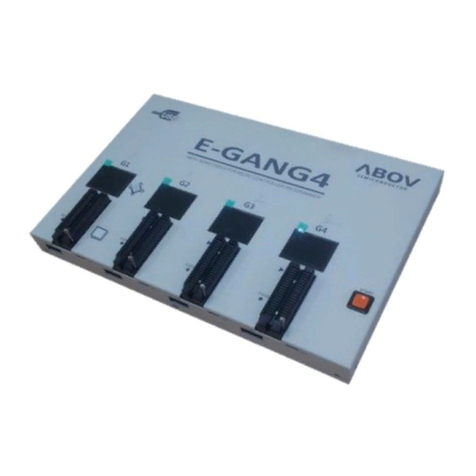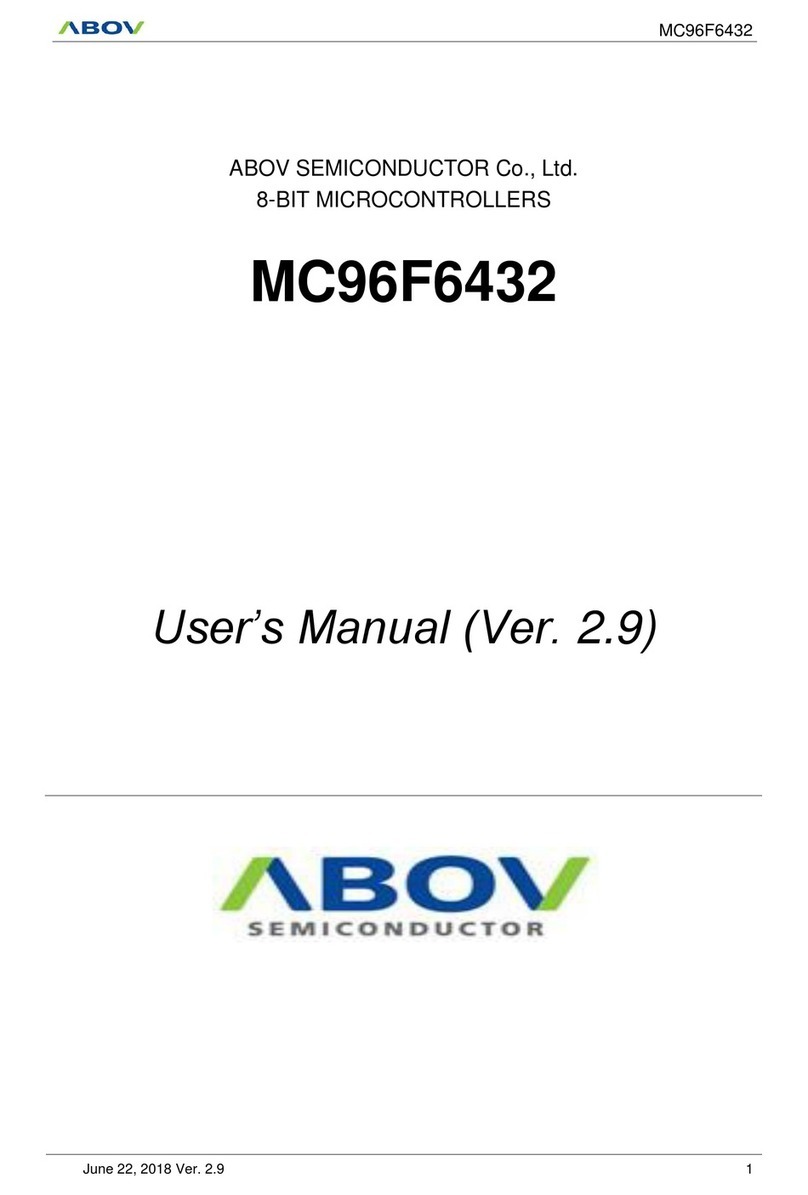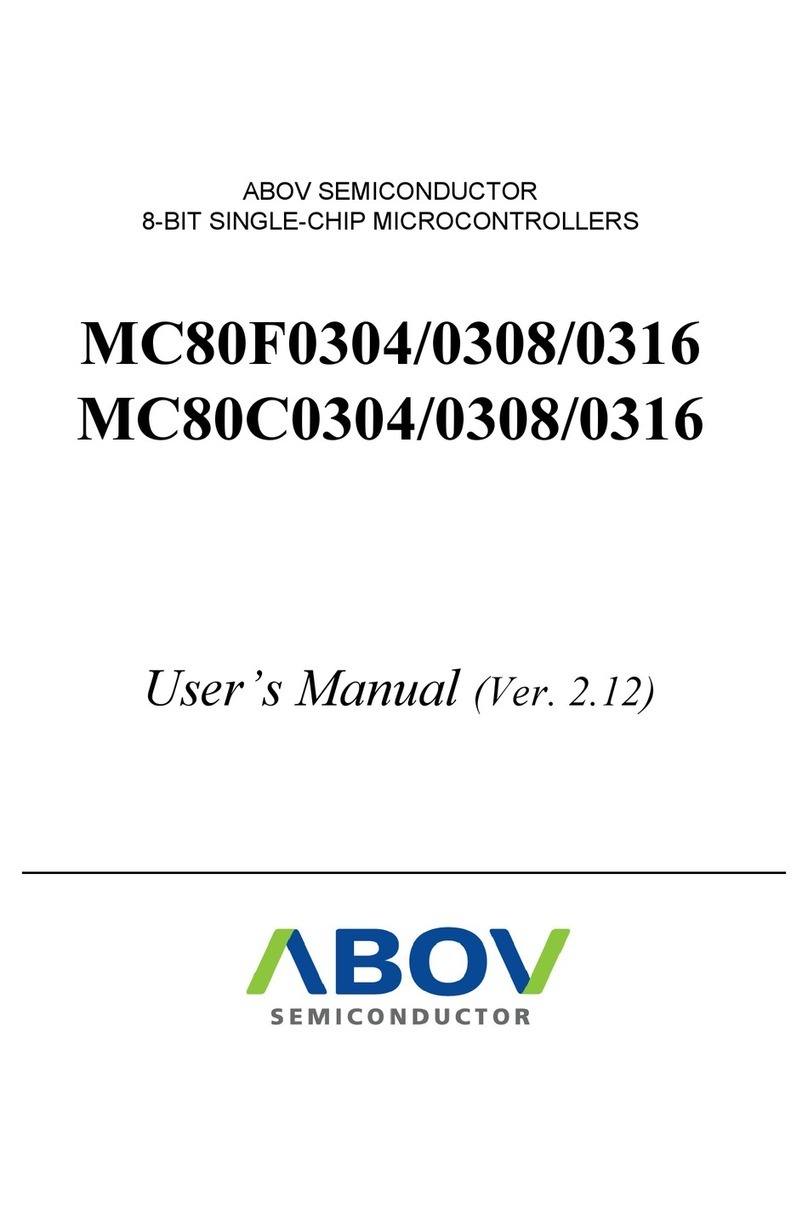7.8 Interrupt enable accept timing.............................................................................................63
7.9 Interrupt service routine address ........................................................................................63
7.10 Saving/restore general purpose registers...........................................................................63
7.11 Interrupt timing....................................................................................................................64
7.12 Interrupt register overview ..................................................................................................64
7.12.1 Interrupt Enable Register (IE, IE1, and IE2)...........................................................64
7.12.2 Interrupt Priority Register (IP and IP1)...................................................................64
7.12.3 External Interrupt Flag Register (EIFLAG0 and EIFLAG1)....................................65
7.12.4 External Interrupt Polarity Register (EIPOL0L, EIPOL0H, and EIPOL1)...............65
7.12.5 Register map..........................................................................................................65
7.12.6 Interrupt register description...................................................................................66
8Clock generator............................................................................................................................69
8.1 Clock generator block diagram ...........................................................................................69
8.2 Register map.......................................................................................................................70
8.3 Register description ............................................................................................................70
9Basic interval timer.......................................................................................................................71
9.1 BIT block diagram...............................................................................................................71
9.2 BIT register map..................................................................................................................71
9.3 BIT register description.......................................................................................................72
10 Watchdog timer............................................................................................................................73
10.1 Setting window open period of watchdog timer ..................................................................74
10.2 WDT block diagram ............................................................................................................75
10.3 Register map.......................................................................................................................75
10.4 Register description ............................................................................................................76
11 Timer 0/1/2...................................................................................................................................78
11.1 Timer 0................................................................................................................................78
11.1.1 8-bit timer/counter mode ........................................................................................78
11.1.2 8-bit PWM mode.....................................................................................................80
11.1.3 8-bit capture mode .................................................................................................82
11.1.4 Timer 0 block diagram............................................................................................84
11.1.5 Register map..........................................................................................................84
11.1.6 Register description................................................................................................85
11.2 Timer 1................................................................................................................................87
11.2.1 16-bit timer/counter mode ......................................................................................87
11.2.2 16-bit capture mode ...............................................................................................89
11.2.3 16-bit PPG mode....................................................................................................91
11.2.4 16-bit Complementary PWM mode (Dead Time)...................................................93
11.2.5 16-bit timer 1 block diagram...................................................................................95
11.2.6 Register map..........................................................................................................95
11.2.7 Register description................................................................................................96
11.3 Timer 2................................................................................................................................99
11.3.1 16-bit timer/counter mode ......................................................................................99
11.3.2 16-bit capture mode .............................................................................................101
11.3.3 16-bit PPG mode..................................................................................................103
11.3.4 16-bit timer 2 block diagram.................................................................................105
11.3.5 Register map........................................................................................................105
11.3.6 Register description..............................................................................................106
12 12-bit ADC..................................................................................................................................108
12.1 Conversion timing .............................................................................................................108
12.2 Block diagram ...................................................................................................................109
